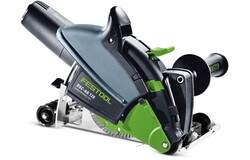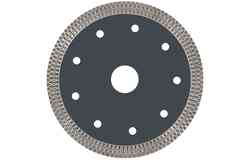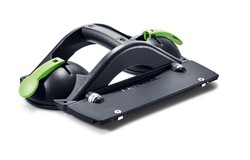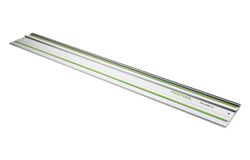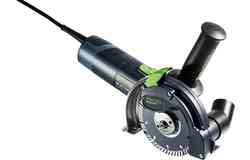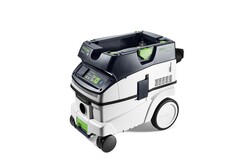Cutting large tiles – cutting large-format tiles

Description

Tools/accessories
Alternative tools
Preparation/set-up
-
Before starting to machine your large-format tile, make sure that the ground is covered and that there is sufficient space is available to avoid damaging any objects or the tile. You must also comply with occupational health and safety measures. It is recommended that you wear protective goggles and ear protection.

-
It is recommended that you use a dual suction pad (GECKO) to lift large tiles. This pad makes it easier to lift and carry the tile. Please ensure that the surface is free of dust so that the pad can grip the tile as firmly as possible.

Procedure
-
Use the GECKO to carry the large-format tile and place it on a suitable base.

-
Mark your required measurements and align your guide rail using the markings.

-
Use the GECKO to secure the guide rail to the surface of the tile.

-
Pick up the DSC-AG 125 cutting system and please make sure that the correct diamond cutting disc is installed (TL-D 125 Premium).

-
Then attach the cutting system to the CTM 36 E AC extractor. Due to the volumes of dust that are generated, we recommend working with a 36 diameter hose. Make sure that all of the parameters are set correctly (hose diameter, AC function ON, AUTO mode).

-
Now set the required depth for the tile to be machined.

-
Position the cutting system on the guide rail and switch it on. Start making your cut and be careful not to push the cutting system forwards too quickly in order to obtain the best possible result.

-
After completing your cut, release the GECKO and remove the guide rail.

-
You can now use the GECKO to lift the large-format tile and carry it to where it will be installed. We wish you every success with installing the tile.

-
Our illustrated guides and work results are documented working steps that we have performed in practice. They are individual examples and do not guarantee or promise that users will obtain the same results. The results will depend on the user's experience and skill, as well as the material being used. Illustrated guides do not replace any Festool operating manuals and/or safety instructions. Liability for ensuring that the information, instructions and applications are free from content defects and defects of title, in particular with regard to the absence of defects, correctness, freedom from third party intellectual property rights and copyrights, completeness and fitness for purpose, is excluded. Claims for damages made by the user, regardless of their legal basis, are excluded. These liability exclusions are not applicable if the damage was intentional or caused by gross negligence, or in cases of statutory liability.
We cannot accept liability for damage resulting from defects.↑







































